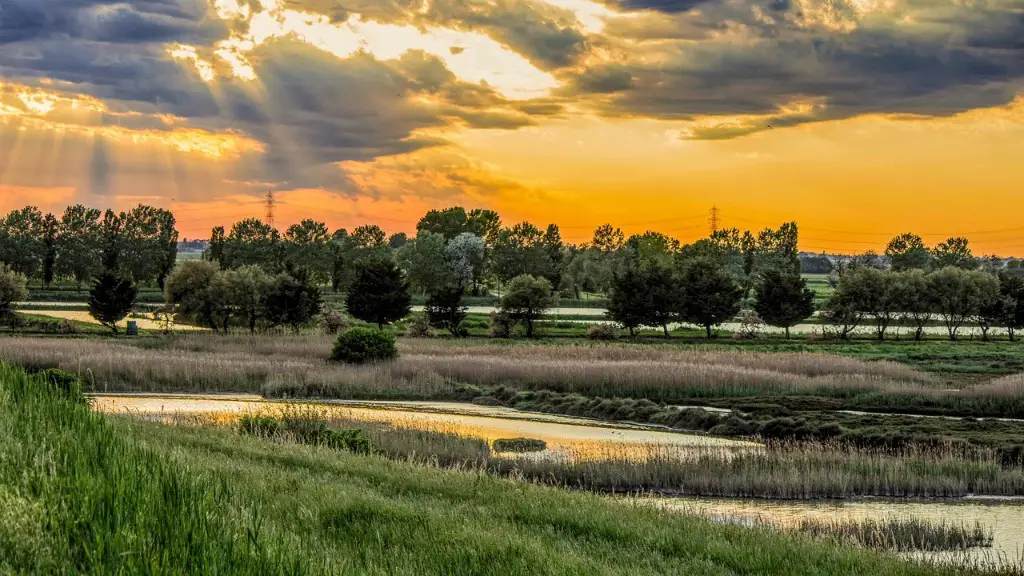The Nile River In Egypt: Egypt has long been known for its incredible historical architecture and priceless artifacts that stretch back thousands of years. Egypt is also home to one of the oldest, most powerful, and magnificent rivers in the world, the Nile River. The Nile has a deeply sacred importance to Egypt, as it has historically been a main source of water, nutrients, and transportation and has held significant social and political ties to the region since ancient times.
The Nile’s exact source is said to have been located in the Eastern African Mountains, particularly in the Lake Victoria Basin, Natron, and Kilimanjaro Rivers in Burundi, Rwanda, and Tanzania respectively. From these sources, the Nile flows in an expansive 4,258 mile long northerly course to its destination in the Mediterranean Sea. Nile’s course has allowed for the fertile Nile Delta to form and, in the past, the Nile served as an important factor in other civilizations due to its gradual access from the sea.
The river also served as the primary origin of transportation for the ancient Egyptians. In the past, the banks of the Nile were lined with valuable resources for transporting goods such as papyrus, cotton, and herbs. In ancient times, small boats and large canal boats made of papyrus acted as vessels that connected towns and civilizations in Egypt. Today these boats are mostly used for the transportation of tourists.
Throughout its long-lasting course, the Nile has provided much more than just transportation. The Nile provided an essential source of water and irrigation to the surrounding land of Egypt – becoming an iconic symbol of prosperity and growth. The waters of the Nile also carried essential nutrients and minerals necessary for the growth of crops. In ancient Egypt, the fertilization of farmland allowed farmers to grow food for the people and was a major contributor to the nation’s prosperity. Eating nutritious food and living near the Nile are still part of the Egyptian culture today.
The Nile has a long and illustrious history. In ancient Egypt, it was not only a source of water and food, but its presence also inspired mythology and religious beliefs. Ancient Egyptians believed that the Nile was the source of all life, and as such it was made into a god that represented fertility and abundance. As such, the river continues to be an important part of the region’s culture and beliefs.
The Nile is still arguably the most important and prosperous river in Egypt, with its banks confirming to villages, settlements and farms. Tourists often travel to the Nile to take in its breathtaking beauty, but also to learn the history and culture of the region. The Nile’s importance and constant presence have made it a symbol of resilience and power in the region, and its importance to Egypt is environmental, social, cultural, and historical.
Impact of the Nile on Ancient Egyptian Civilization
It’s impossible to study ancient Egypt without considering the immense impact the Nile had on the nation’s growth. The sheer abundance of its waters and availability of nutrient-rich soils allowed for new advances in agriculture and navigation. Moreover, it gave the region a distinct control of trade and commerce with other nations. This allowed the Egyptian civilization to thrive and develop an identity in the region.
The Nile was also an important source of connection for the region. By controlling the river and its resources, Egypt was able to unite all areas around the river and expand their reach to many other civilizations all around Africa. The Nile, to this day, is still a primary source of access and transport for many of the surrounding countries.
The impact of the Nile is significant in terms of Egypt’s historical and cultural development. The river’s waters provided an essential source of life and, in the past, was believed to be responsible for the fertility of Egypt’s soil and its abundance of agriclture. As such, the river has served an an immensely important source of social and economic stability in the region.
The Nile is also responsible for the development of many of Egypt’s most acclaimed monuments. The pyramids and temples at Giza have stood since ancient times, attributed to the Nile’s nourishing energy and minerals. Furthermore, the Nile inspired many of the region’s most iconic art and literature, often depicting the river and its power in sculpture and painting.
Moreover, the Nile is synonymous with the region’s politics. Even after suffering ancient invasions, the Nile has remained central to Egypt’s identity and culture and is seen by many as a source of their nation’s strength and resilience. The river is even acknowledged and celebrated in modern times, with most major cities and towns uprooting alongside it.
Modern Uses of the Nile
The Nile continues to have a significant presence in the region and is used in many aspects of life today. The river is still used for transportation and is home to many resorts, restaurants, and tourist attractions. The river is also renowned for its recreational activities, with countless tourists flocking to the region every year for fishing and boating.
The river provides for a variety of wildlife and natural resources. Bird species such as pelicans and flamingos call the waters of the Nile home, while many species of fish, amphibians, and reptiles also dwell in the river. Furthermore, the Nile basin continues to supply valuable resources such as fertilizers and irrigation, which are used by farmers and householders in the region.
In modern times, the Nile is also seen as a symbol of progress and sustainability in the region. Governments backed by the Nile have increased access to clean water and promoted education and healthcare initiatives. The Nile has also been seen as a source of economic growth through investment and the incorporation of renewable energy sources such as hydroelectricity.
The Nile represents not just one of the most celebrated rivers in history, but is also a beacon of positive growth and progress in the region. New uses of the river are constantly being developed, with governments and communities constantly striving to benefit from the natural resources it provides.
Conclusion
The Nile River in Egypt is much more than just a river; it is a source of life, sustenance and identity for many of those in the region. From its bountiful supply of water to its transportation services, the Nile has been a deep part of Egyptian history and continues to be a powerful force in the region for centuries of generations. Today, the Nile continues to be seen as a symbol of power, resiliency and progress in the region, and its importance is still celebrated as such.




